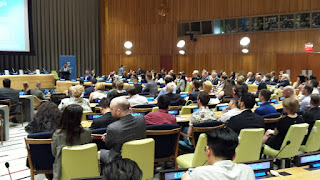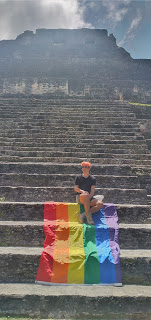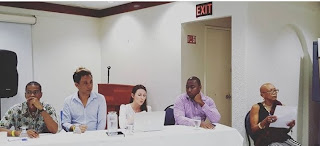Belize LGBT Lessons: A Culture of Active rebellion, resistance and revolt!
10th November, 2018
Women In Development
https://ambergriscaye.com/forum/ubbthreads.php/topics/528687/trailblazing-women-of-belize.html
Gwen Liz
https://en.wikipedia.org/wiki/Gwendolyn_Lizarraga
Refugee
https://www.theguardian.com/world/2017/may/31/belize-central-america-refugees-immigration
History of Northern Belize
Breaking News
When a trans person decide to walk unto the streets of Belize knowing that she will be insulted, mocked, shamed threaten, but does it anyway. It is an action of resistance. When LGBTI communities all over this country threw house parties in Belize City, Orange Walk, Cayo and else where, it was an action of resistance. In fact, out stubbornness and refusal to capitulate to violence have made us a hardy lot. To understand these acts of defiance, we need to explore the country of Belize.
As a country we developed against the odds, with its settlement efforts upon the arrival of the British Bucanners and privateers who work to get rid of the Spaniards out of Belize and despite the British government not wishing to declare Belize a crown colony. They settled anyway. According to the Belizean History, it reported ,"In 1725 the population of Belize had been reduced to a small quantity of people, “not exceeding above fifty white men and about a hundred and twenty negroes.” In July, 2018, the population was estimated at 398,050.
The Belize economy was said to be between GDP was an estimated 3.23 billion in 2017 vs 3.151 billion Belize dollars in 2016. Although Belize has the third highest per capita income in Central America, a key government objective remains reducing poverty and inequality with the help of international donors. In 2008, the total overnight visitors were 245,000 in 2017 it was 427,109 with cruise ship arrival amounting to 1,014,231. Belize as a Tourist destination is unique for its diverse locations. The beauty we have, however, mask a history of inhumanity, unofficial militarization of our citizenship that has demonstrated that we may have simply change the faces of our colonizers and the system they left behind. We did not loose that system of marginalization as constitutional rights violations in the South is as normal as it is in Belize City and Orange Walk. To value our history of advancing rights, we need to look at the context of the past and the groups like thee Maya, Garifuna, Mestizos, women and LGBT who have sought to change the system of marginalisation they experienced over many generations.
In 1530 Alfonso D'Avila worked in the Yucatan to conquered and established Salamanca de Acalán as a base from which to launch new attempts of colonization of the Maya. He continued southeast to Chetumal where he founded the Spanish town of Villa Real just within the borders of modern Belize.The local Maya fiercely resisted the placement of the new Spanish colony and d'Avila and his men were forced to abandon it.
Again, in 1847 The Yucatán Maya rose up in rebellion against the Mexican government. The successful rebellion of the Maya almost manage to take over the entire peninsula in what has become known as the War of the Castes. The fighting continued till 1901. The seeds of the conflict can be traced to the second decade of the 19th century, when a series of conflicts between Yucatan and Campeche erupted. The Maya Indians were enlisted by the Yucatecos to fight on both sides. In 1847 hostilities reached the point to which the Yucatecos military formed battalions of Maya Indians to attack other Mayan towns. One Mayan battalion entered Valladolid and massacred the inhabitants. As a result of these incursions, the fury of the Maya grew.
The Caste War is thought to have officially began with the execution of three Mayan leaders at Valladolid for having planned an Indian uprising together. The conflict heated up once more. The booty obtained from the sacking of towns which fell to the Cruzoob, was exchanged for arms, gunpowder and other supplies provided by the Belizeans along the Hondo River. Over time, seeking security and peace, people settled in the Northern part of the Country and brought with them knowledge of agriculture.
The battle with state mechanism has only changed form and face, not intent to maintain systems of oppression and marginalization of the Maya population. On June 25th, 2015, Cristiana COC and over 10 Santa Cruz villagers where arrested at 4:am in the morning at their homes. PM Barrow set the tone, that he would he would see to it that the people responsible were criminally charged for the “intolerable” and allegedly racist acts committed against Myles. Though, trumped up charges were made against the Mayas, they eventually won. The damage was done in promotion of distrust of state systems.
The battle with state mechanism has only changed form and face, not intent to maintain systems of oppression and marginalization of the Maya population. On June 25th, 2015, Cristiana COC and over 10 Santa Cruz villagers where arrested at 4:am in the morning at their homes. PM Barrow set the tone, that he would he would see to it that the people responsible were criminally charged for the “intolerable” and allegedly racist acts committed against Myles. Though, trumped up charges were made against the Mayas, they eventually won. The damage was done in promotion of distrust of state systems.
The Mayas has not been the only group with a history of resistance. The Garinagu in Belize adds to our rich history of resistance. In 1660, a British peace treaty guaranteed the “perpetual possession” of the island to the Garinagu, but less than a decade later, the British broke the treaty and re-claimed the island as a colonial possession.In 1796 as the Garinagu desperately sought a solution to their imminent enslavement.The Garinagu fought the British fiercely for their independence. They lost and the the British moved between 1,700 and 5,000 of the Garifuna across the Caribbean to the Bay Islands. The minority of survivors were deported to the Honduran island of Roatán.n 1832, led by the charismatic and ambitious Alejo Beni, a group arrived on the southern Belizean coastline. It is this arrival that is celebrated every November including Dangriga, Seine Bight, Hopkins and Punta Gorda in southern Belize.What should be remembered of this era is that, for centuries, the Garifuna people had faced persecution, injustice and demoralization, and yet they still arrived in Belize with an optimistic ambition to serve their ‘new’ homeland and to develop their ‘new’ nation.
By 1802 about 150 Garifuna had settled in the Stann Creek (present-day Dangriga) area and were engaged in fishing and farming.Other Garifuna later came to the British settlement of Belize after finding themselves on the wrong side in a civil war in Honduras in 1832. Many Garifuna men soon found wage work alongside slaves as mahogany cutters. In 1841 Dangriga, the Garifuna's largest settlement, was a flourishing village.
The slaves' experience, though different from that on plantations in other colonies in the region, was nevertheless oppressive. They were frequently the objects of "extreme inhumanity," as a report published in 1820 stated. The settlement's chaplain reported "instances, many instances, of horrible barbarity" against the slaves. The slaves' own actions, including suicide, abortion, murder, escape, and revolt. Resistance and rebellions against their masters were in numerous forms. It is known that there were slave revolts in Belize in 1745, 1765, 1768, 1773 and 1820. The largest of these revolts was in 1773 when the slaves revolted for five months killing six white men before walking 100 miles to enter Mexico. Runaway slaves also formed two communities in the area of the Sibun River and its tributaries such as Runaway Creek. .The last revolt in 1820, led by two black slaves, Will and Sharper, involved a considerable number of well-armed individuals who "had been treated with very unnecessary harshness by their Owner, and had certainly good grounds for complaint. The struggle about exploitative continued in the name of Antonio Soberanis Gomez,borne 1897 to Mexican parents living in San Antonio Rio Hondo, who's family moved to Belize in 1894. In his most famous quote, he said, "I'd rather be a dead hero than a living coward." The context was the impact of hurricane hattie in 1931 that left Belizeans hungry and unemployed. The Colonial Governor Harold BAxter Kittermaster offered 80 jobs knowing there was a registry of 1800 unemployed.On 1 October 1934, Soberanis organised the first labour strike at the B.E.C. sawmill. It turned into a riot, and the police arrested 17 people. When he went to post bail for those arrested at the strike, he was himself arrested. The effort nevertheless led to a raise in benefits and years later the work of the nationalist movement was turn over to George Price.
While progress was gradually made, the long history of Belize welcoming persecuted populations from Mexico, the lesser antilles extended itself to refugees between the 1980's and 1990's escaping internal war. We welcomed an estimated 30,000 people from Central America in the decade. At the time, El Salvador, Nicaragua, and Guatemala that had interlocking civil wars between US supported despots and right-wing guerrillas that did not help the situation. There civil war led to an estimated 75,000 ,30,000 and 300,000 person being murdered alone.
Still refuge does not bring automatic political, social and legal advancement as the women's movement learnt in Belize. Of note, Ms. Beverly Swasey was a Belmopan City Councilor and Deputy Mayor for a while, Elfreda Reyes, In 1934 took a frontline position with strikers against the oppressive Belize Estate Company (BEC). In 1935 she petitioned the British Honduras Governor for the right to vote (suffrage) with the goal of creating a national democracy without hierarchy, class, sex or race.She became politically aligned to both George Price’s PUP and Phillip Goldson’s NIP. She was a militant leader for our nationalist aspirations, and a prominent pioneer for women’s political organization in Belize.When we teach citizenship or the concept of democracy Elfreda’s contributions must be essential learning. When we teach modern Belize she must be placed in the context of leader, activist, liberator, and grassroots mobilizer. When we teach society and culture she must be exalted as a person who in the face of incredible odds and discrimination stood up to power and inspired thousands of people to stand up too. Dorla Bowman, Served as Deputy mayor of Belize City, engaged on the issues of violence against women, using the organizations in which she worked and served, the Women’s Bureau (Women’s Department) and the The National Women's Commission to address these causes. And, taking action to further address these issues by establishing the Belize Women Against Violence Movement, the shelter for battered women and the Belize Women's Political Caucus. Likewise, lead the drafting of the Domestic Violence Bill and joined hands and voices with thousands of women countrywide for its passing into law. The list of notable women who have contributed to our development is to numerous to mention, but Gwendolyn Margaret Lizarraga, stand out, as she became the first woman to be elected to Belize's national assembly in 1961, she was reelected in 1965 and 1969. The point can me made that the current Speak of the House Laura Longsworth, builds on the experiences of Sylvia Flores the first speaker of the House in 2001, lawyer Lisa Shoman, Carolyn Reynolds work at the Women's Issue Network. The historical lesson has been we must risk, mobilize and participate at the table of decision-making. That change does not come without out visibility and a willingness to act and sacrifice.
Such has lesson has not been forgotten in simmering development of the the L.G.B.T.I movement in Belize. While an outline of its development can be found in the multi-sectoral response for HIV, it was not until 2006 that community representation was framed in the development of the United Belize Advocacy Movement which shamelessly began to represent LGBTI issues at the National AIDS Commission. For too long, a heteronormative view determined investments in the HIv response. We changed all that, with pushing the National AIDS Commission to push is legal review to be more inclusive; with ensuring that a module was developed for addressing discrimination and human rights in the 2nd Global fund round; with monitoring of National Strategic Plans, research on population size estimates; adherence, progressive report on Universal Periodic Review and International Covenant on Civil and Political Right; contributing to the the Global fund strategic objectives among others actions. Our advocacy have both a national and trans national framework which feed into a long-term investment of changing the way our society looks at civil rights protections. We make the point that change require a vision with leadership that can sacrifice and make long-term investments that can last beyond a generation. Will the L.G.B.T.I movement in Belize learnt the pitfalls of internal strive, time will tell. What we do know is that we have learnt the lessons of our indigenous friends to litigate, to use cross border advocacy, to see our investment as a long-term effort. What we do know, is that we have learn about trailblazing and taking risks to advance dignity and rights from out friends in the Women's Movement. What I do know is that our community have used both passive and active resistance to challenge the majority about their world view on sexuality and have legitimize our cause. We have learned that not every fight needs to be on the national stage, but discipline is required to stay the course. Let see what the years to come brings for L.G.B.T.I Belizeans.
Source
http://belizeinfocenter.org/history/1638-1871/
Women In Development
https://ambergriscaye.com/forum/ubbthreads.php/topics/528687/trailblazing-women-of-belize.html
Gwen Liz
https://en.wikipedia.org/wiki/Gwendolyn_Lizarraga
Refugee
https://www.theguardian.com/world/2017/may/31/belize-central-america-refugees-immigration
History of Northern Belize
http://sib.org.bz/
Nicaragua
https://www.washingtonpost.com/archive/politics/1990/02/27/us-war-by-proxy-at-an-end/770483d0-c355-4288-8819-9b0dcc928aee/?noredirect=on&utm_term=.7a069c8cc38b
Antonio Soberanis
https://en.wikipedia.org/wiki/Antonio_Soberanis_G%C3%B3mez
https://www.mybelize.net/people-culture/antonio-soberanes/
Nicaragua
https://www.washingtonpost.com/archive/politics/1990/02/27/us-war-by-proxy-at-an-end/770483d0-c355-4288-8819-9b0dcc928aee/?noredirect=on&utm_term=.7a069c8cc38b
Antonio Soberanis
https://en.wikipedia.org/wiki/Antonio_Soberanis_G%C3%B3mez
https://www.mybelize.net/people-culture/antonio-soberanes/
Breaking News




Comments
Post a Comment